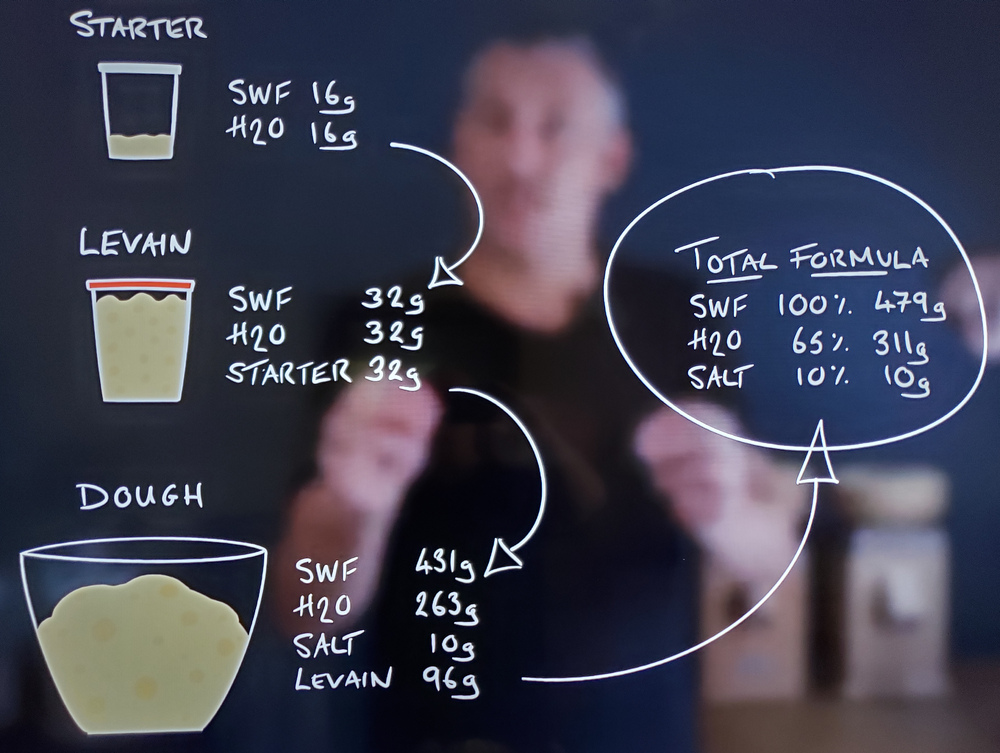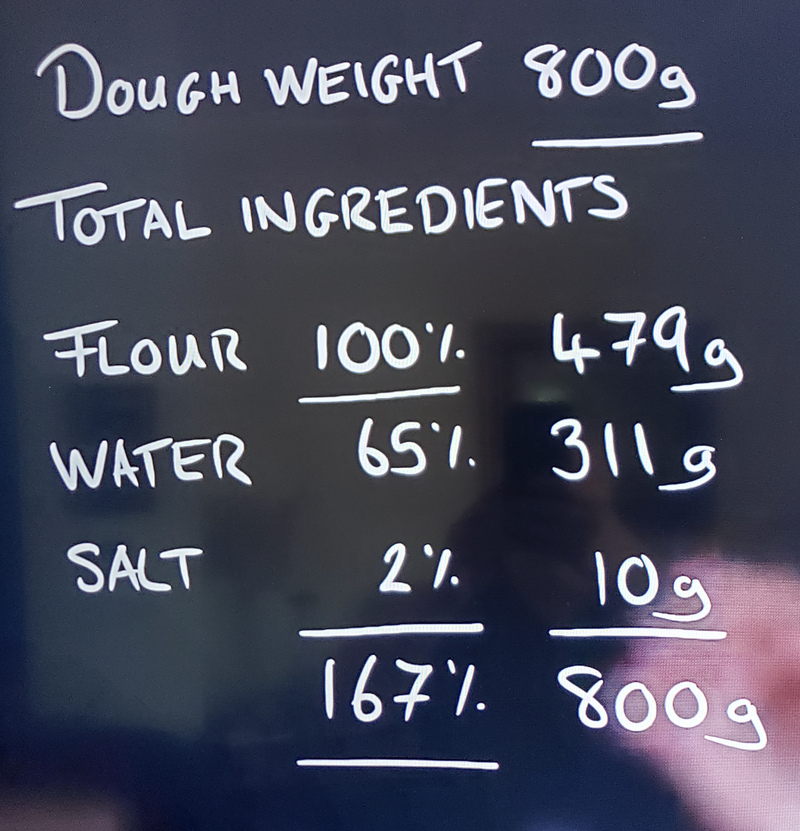More sourdough notes
Pizza dough and percentage protein
10g / 100g is too weak. This is grocery-store breadflour territory.
Always make pizza dough 24 hours ahead of time in order to be able to stretch it without the gluten preventing it.
To increase from 10% to 13%, add 3g vital wheat protein per 100g of flour. Don't walk the path of the calculus-fraught subtraction of 3g of flour to bring the outcome to 100g, just add the extra and leave be.
FoodGeek
When FoodGeek does final shaping, ...
...he dusts the boule with flour, then flips the pâton over and the floured side becomes the top. The shaping is guided in consequence.
Oven spring and open crumb are facilitated by reduced fermentation/proofing, to 10% or 25% from 50% or 75%.
He does stretches and folds the way bolts are torqued.
He uses bread flour with 14.5 grams protein per 100 grams.
FoodGeek mistake list...
- Using a weak starter.
- Using the float test—only works with bread flour, not rye, whole wheat, etc. If starter has doubled or, better, tripled, it will work.
- Not using the window pane.
- Using fancy whole- or ancient grains. Learn to bake sourdough first, then play the grand piano.
- Under-proofing or over-proofing. Proof to 25% over original pâton.
- Complicating things—fancy schedules, numerous folds, not mixing ingredients all at once, resting for 1 hour, 3 stretches and folds, preshaping, final shaping, cold fermenting, etc. Chill out already.
- Not baking long and hot enough. Internal moisture ruins crust. Bake for 20 at 500°, then uncover and finish at 450° for 25. Don't like crust? Bake at lower temperature for second half, but don't skimp on time.
- Failing to use a Dutch oven forfeits a lot of oven spring.
- Failing to use a baking steel (or, at least, a stone) yields uneven temperatures.
From Culinary Exploration
How to calculate ingredient weights...
...for a given total, i.e.: for an 800 gram banneton in which the dough before baking will weight 800 grams. (Not shown: levain is just 20% of flour's weight.)
More from Culinary Exploration...
Practice scheduling, relieve the pressure that will induce you to rush proofing.
Starter 50g water 50g flour 10% starter to flour (5g)
Flours
Strong (> 12% protein) white bread flour
Whole wheat improves taste (limit to 10% or the crumb will be substantially less airy)
Hydration
With 12% flour, 65% hydration is a good place to start.
At 75° in the kitchen, the culture takes about 10 hours to ferment ready for baking.
Fermentation
There are 3 ways to judge:
- Volume (rubber band on see-through container, etc.)
- Dough pH
- Habit when handling the dough
After stretches and folds, leave pâton in a container and allow to rise by 75% before shaping.
Recipe
Here's a 72% hydration specialty recipe:
374g water 11g salt 419g strong bread flour 56g whole wheat 56g malted barley 56g active sourdough culture 8g honey
Mixing
Always start with water because if you over-shoot, you can pour it out.
Dissolve salt in water.
Set bowl aside; in a separate bowl:
Blend flours.
Add one-half flour mixture to the water and mix.
Add in sourdough and mix to distribute.
Add honey and mix.
Add in rest of flour and mix to form a shaggy ball.
Allow to autolyze for 15-30 minutes or, if in a hurry, ...
Proceed to knead now to render homogeneous.
(If you autolyze, likely the dough will already pass the window test after this kneading.)
Create a smooth dough ball and return to bowl. Cover and rest.
Next options...
Perform folds and stretches.
Pre-shape, rest, then final-shape, proof and bake.


